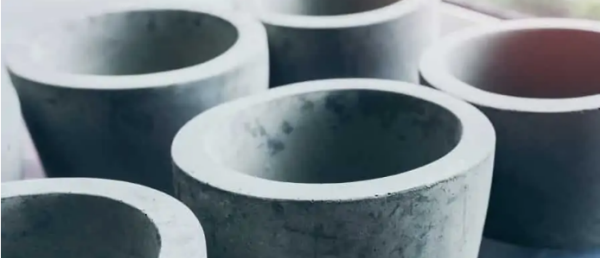When I wander around in the nurseries, I see so many creative garden ideas and such wonderful looking pots and planters. Some years ago, my older son, 16 at that time, thought it would be better to have a sidewalk go from the side of the house to the patio then out to the pool. So, we built one! Turns out making a cement flower planter is a very similar process and it is a lot easier! Yet it is something you can do on a weekend with your family.
 The materials needed are easy to get and the cost is minimal. You can even use old items from your house or garage. And the results can be as varied as your imagination. Best thing – if it turns out a little wonky, turn the bad side away so most won’t even know it is there.
The materials needed are easy to get and the cost is minimal. You can even use old items from your house or garage. And the results can be as varied as your imagination. Best thing – if it turns out a little wonky, turn the bad side away so most won’t even know it is there.
Concrete works well even in a natural garden. We have stepping stones and a sidewalk in, or near, our flower gardens. So why not a cement flower planter? They also add interest. Cement is fairly easy to work with; but be sure to wear plastic gloves to save your nails. And take off rings, watches, and Fitbits. You can make your planters almost any size.
Materials
- Two (2) bowls, planters, or hanging baskets. One must be slightly larger than the other.
- Quick setting concrete (it dries faster). Quikrete is the one I’ve used.
- Optionally, Quikrete Liquid Cement Colour, if you wish to colour your cement.
- A bucket and long handled trowel or shovel.
- Water.
- Spatula or long piece of dowel of ¼” to ½” diameter.
- A hand saw to cut short pieces of dowel if you choose to make drainage holes with them. Otherwise, you will need a drill and a cement bit to allow you to successfully drill into cement to make the drainage holes.
- Some cooking oil and Pam cooking spray.
- Optionally cement seal.
Directions:
What to make a form from. Let’s consider making a medium sized planter as our first one. First, you need a form. A form is something to pour the cement into to keep the shape you want. You may think “how is the cement going to stay on the sides of the eventual bowl?” Good question – the answer is using a second smaller form of the same or similar shape. You are going to “squeeze” the cement between them leaving what will become the thickness of your bowl.
For your first attempt, plastic containers of the same shape make a perfect start. Two hanging planters of different sizes will make a great shape as well. Let’s say you decide to use 2 mixing bowls. Mine came as a set of 3. I’ll choose the largest one and the smallest one to get the thickness I want for the bottom and sides of the planter. You could also use any Tupperware, empty food containers. As long as you have 2 of them, 1 slightly smaller than the other. Lengths of plywood that are screwed together to make forms allow for larger, more interesting shapes such as squares, rectangular, octagons, etc. If you wood is taller, then you could also make taller planters in these shapes. Bottom line: It’s your planter and your decision.
Prepare your forms. It is important to prepare your forms so you can separate the concrete from the forms easily. Coat each form with cooking oil. Completely cover the inside of the larger form and the outside of the smaller one. The cement will be between them. You may also choose to line them with aluminum foil and spray them with “Pam” or something similar. Taking time to do this thoroughly will ensure you can get your planter out of its form with ease.
Now you need to make the cement. Of course, quick setting concrete will get your project finished more quickly but you can also use standard cement. I’d suggest a bucket or wheelbarrow in which to mix the cement powder, as well as a ready water source. Now would be the time to colour your cement if that interests you. You can add a bit of acrylic or latex paint to the cement or try QUIKRETE Liquid Cement Colour. Simply drop some into the cement you are making. Now mix the concrete well until creamy and thick and the colour, if used, is evenly distributed.
Put the cement into the form. For concrete flowerpots, add a generous amount of concrete to the larger form until filled about halfway up. Then construct your drainage holes by coating short dowels (the height of the thickness of cement that will be between your form pieces) with petroleum jelly and pushing them into the cement in the bottom of the larger bowl before you put the smaller bowl into the cement that’s in your larger bowl. If you prefer, you can forget the holes at this point. But this means you will need to drill them through your new planter once it has cured. Now place the smaller form into the concrete of the larger one, which will push the excess cement up the sides between your forms. Some may overflow. Use that excess to fill between the 2 forms ensuring there are no gaps and that the top lip of the bowl is smooth. You can use a wooden stick (or handle of a long spatula or length of dowel) to push out air bubbles as you push the small bowl into the bigger one.
Curing your planter. At this point you need to let your cement planter cure. This is the time to clean your tools! Wash your bucket or wheelbarrow, your spatula, shovel and your gloves. Wash down everything that has wet cement on it – except your planter of course although you may choose to wipe off the inside of the smaller bowl and the outside of the bigger bowl. If your tools dry with cement on them, they are unlikely to be usable for your next project.
In about 18 hours, you can remove the inner form and the dowels if used. Wait 24 more hours before removing the outer form. To keep the colouring of your cement planter natural you may choose to coat your new planter with masonry seal. This is optional.
After a few of these, you will be ready to move on to larger cement planters, various planter shapes, and colours! And remember your “form” materials can all be reused.
Enjoy while adding interest to your gardens!
Submitted by Doreen Coyne, a member of the Richmond Hill Garden & Horticultural Society



